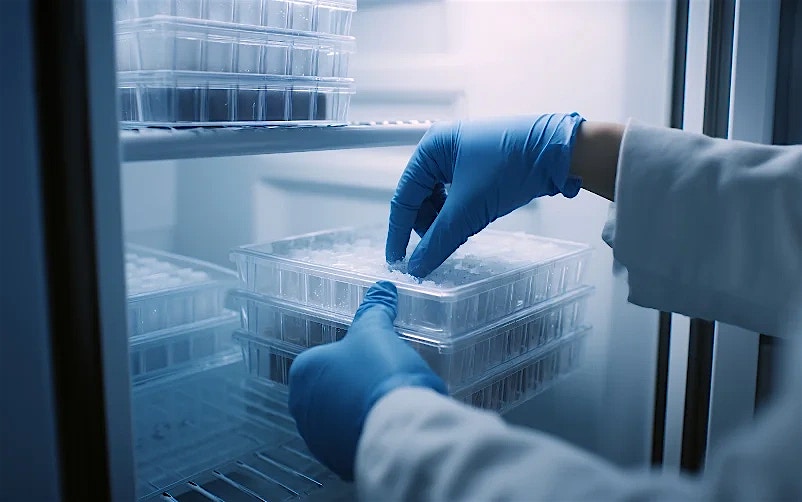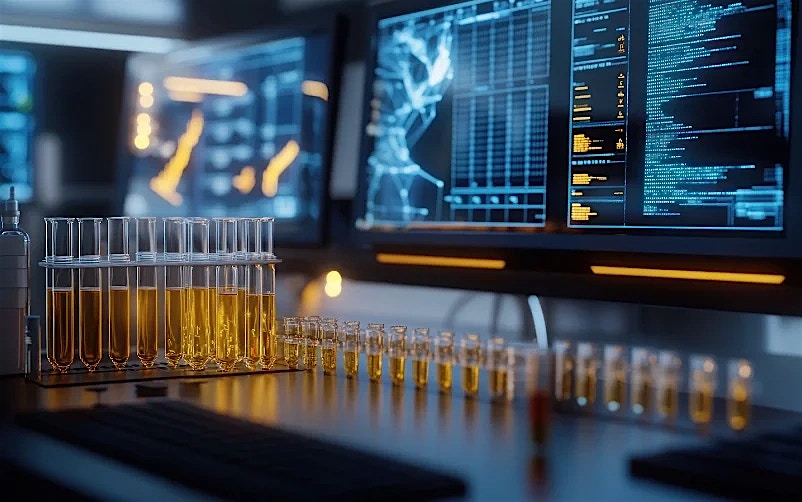Digitizing laboratory operations for a leading diagnostics company
Overview
Our client, a large commercial diagnostics company in the United States, processes thousands of samples daily across more than 20 laboratories nationwide. Managing approximately 40,000 pieces of equipment from 120 different types of original equipment manufacturers (OEMs), the company set out to digitize its laboratory operations to enhance efficiency, streamline workflows, reduce operational costs and maintain same-day turnaround commitments to customers.
The Challenge
The burden of manual processes
The company's dependence on manual processes, particularly Excel-based management of thousands of pieces of equipment and inventory across 24+ labs, presented significant challenges. Their goal was to drive operational excellence through digitization to enable faster sample processing and cost efficiency. However, several key issues impeded progress:
- Equipment downtime: Identifying machine failures could take up to three hours, disrupting workflows and delaying sample processing, which often led to unnecessary equipment purchases and increasing inventory costs.
- Lack of connectivity: Many instruments were not networked, preventing real-time monitoring and requiring manual checks, which lowered productivity.
- Reagent waste: Limited visibility into reagent levels led to inefficient practices, such as discarding partially used canisters during shift changes—resulting in millions of units wasted annually.
- Vendor management limitations: Inadequate visibility into equipment performance made it difficult to manage OEM relationships, enforce service level agreements (SLAs) and negotiate service contracts effectively.
These inefficiencies resulted in productivity losses, elevated costs and compromised the company’s ability to meet client commitments.

The Objective
Overcoming inefficiencies with equipment performance management
The client needed a cloud-enabled platform-based approach to digitize their labs across the country. A solution that required customization for each lab was going to be significantly expensive, time-consuming and impractical.
The client sought a partner to deliver a comprehensive digital platform to automate laboratory workflows, optimize equipment and reagent management and provide real-time visibility into operations. The platform needed to integrate data from diverse OEM equipment while respecting intellectual property constraints. Additionally, the client required support in managing vendor relationships and SLAs. The solution was critical to achieving their long-term goal of operational excellence and maintaining competitive turnaround times, directly impacting customer satisfaction and cost efficiency.

The Solution
Compliant data digitization and streamlined vendor management
Our client selected our NextGenLabs.ai platform to address these challenges, focusing on workflow automation and data integration. Key components include:
- Assessment and collaboration: Analyzed lab operations to identify pain points in equipment and reagent management.
- OEM engagement: Partnered with OEMs to build or integrate data connectors. For uncooperative OEMs, we developed the BGA twin, a compliant method to digitize data without infringing on intellectual property.
- Digitization implementation: Digitized 50 out of 120 equipment types, enabling real-time monitoring and automation.
- Validation: Conducted pilot testing in select labs to ensure system effectiveness and compatibility before full deployment.
The solution’s scope included real-time equipment status monitoring, automated reagent tracking and enhanced SLA management capabilities. Its differentiated approach lay in the BGA twin concept, which enabled seamless data integration across diverse equipment types and its ability to provide actionable insights for vendor negotiations.

The Impact
Revolutionizing laboratory operations in just one year
Our NextGenLabs.ai Platform transformed the client’s laboratory operations, delivering significant outcomes within the first year:
- 27% reduction in reagent usage: Automated tracking eliminated wasteful practices, saving millions of units of reagents annually.
- 13% improvement in workforce productivity: Real-time equipment monitoring reduced downtime and streamlined workflows, enhancing staff efficiency.
- Enhanced vendor management: Visibility into equipment performance enabled data-driven negotiations with OEMs, improving service contracts and SLA compliance.
- Cost savings: Reduced equipment duplication and optimized inventory management lowered operational costs.
The platform’s supercharging progress element lies in its scalability and future potential. By digitizing nearly half of the equipment types, the foundation is set for further automation and integration. The roadmap includes expanding digitization to additional equipment, incorporating predictive maintenance algorithms and enhancing data analytics for continuous process optimization. This positions our client to maintain industry leadership, meet evolving customer expectations and drive sustainable operational excellence.





